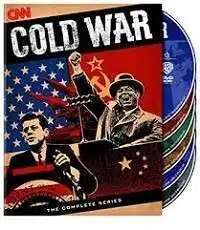
COLD WAR
**What do you mean by the Cold War?
The competition, tensions and a series of confrontations between the USA and the USSR between 1945-1990 which did not escalate into direct war are referred to as the Cold War.
Cuban Missile Crisis and the cold war: In 1961, the Soviet Union feared that its ally Cuba, might be attacked by the USA. Therefore to protect Cuba from possible US invasion and to target the US cities from a close range, it installed nuclear missiles in Cuba.
*When the US came to know about it, it threatened USSR to withdraw the missiles. The US president John F.Kennedy ordered for the naval blockade of the Cuban coast and to intercept the Soviet ships moving towards Cuba.
*This incident put the world on the brink of a nuclear war. However, the crisis was averted as both the superpowers decided to avoid the war.
* This is known as the Cuban Missile Crisis which was considered a high point what came to be known as the Cold War.
**Features of Cold War:
*Power rivalry which never transformed into actual war,
*Ideological differences (Capitalism vs Socialism)
*Formation of regional military alliances based on collective security (NATO, SEATO, Warsaw Pact)
*Arms race as well as arms control,
*Why Cold War did not convert into the actual war?
*Cold War did not convert into actual war because of the deterrence relationship between the superpowers.
*As the two superpowers were nuclear powers capable of destroying each other completely, a full-fledged war was unlikely to take place.
*This is known as the `logic of deterrence’. Thus the nuclear weapons served as a deterrent force which prevented the outbreak of the war and ensured human survival.
* Cold War and the relationship between superpowers and their allies:
During the cold war, superpowers were keen on expanding their sphere of influence by increasing the number of allies in their favour.
*Even smaller states wanted to remain tied to the protective superpowers for:
a) Protection against rival forces,
b) Weapons for their national security,
c) Economic aids for reconstruction and development,
d) Diplomatic support on issues concerning their national interests.
*Superpowers wanted the support of their allies for:
i) Vital resources such as oil and minerals.
ii)The territory from where they can launch their weapons and troops.
iii) Locations from where they can spy against their rival power.
iv) Economic support from their allies for their military expeditions.
The military alliance led by the USA: NATO, SEATO, CENTO
The military alliance led by USSR: Warsaw Pact
**Arenas of the cold war:
Although cold war never turned into the direct war it did lead to many shooting wars where superpowers were poised for a direct confrontation. During the
Korean crisis (1953), Berlin crisis (1958-62), Congo Crisis (1960), Cuban missile crisis (1962), Vietnam crisis, Afghanistan crisis (1979) etc. the superpowers were involved in proxy wars supporting their allies. This is known as the Arenas of the Cold War.
Q.How did the Cold War lead to the arms race as well as arms control?
*During cold war mutual suspicion and rivalry between the two alliances led them to arm themselves to the teeth and to constantly prepare for war. Huge stock of arms was considered necessary to prevent war from taking place.
*The two superpowers also realized that in case of a nuclear war or a nuclear accident, there would be no survivor. Therefore they began to cooperate in limiting or eliminating certain kinds of nuclear and non-nuclear weapons. In the 1960s the two superpowers signed three significant agreements which included
Limited Test Ban Treaty, Nuclear Non-Proliferation Treaty and Anti Ballistic Missile Treaty.
*They held several rounds of arms limitation talks and signed several more treaties. Thus cold–war produced arms race as well as arms control.
Q.What do you mean by Non-Aligned Movement? Name its founding leaders.
*As the cold war was trying to divide the world into rival alliances, a new movement emerged on the world scene which offered the newly independent countries of Asia and Africa with a third option—not to join either alliance.
*This movement came to be known as the Non-Aligned Movement which was the culmination of the cooperation among five leaders namely, Jawaharlal Nehru of India, Josip Broz Tito of Yugoslavia, Gamel Abdul Nasser of Egypt, Sukarno of Indonesia and Kwame Nkrumah of Ghana. These leaders came to be known as founding members of N.A.M
*As an organized movement, NAM formally came into existence in 1961 at Belgrade which was attended by 25 member states. Three factors led to the formation of NAM:
1) Cooperation among the leaders of five countries, India, Yugoslavia, Egypt, Indonesia and Ghana.
2) Growing cold war tensions and its widening arenas.
3)The dramatic entry of decolonized countries of Africa in 1950s.
Q.NAM is not a policy of isolationism or neutrality. Justify.
*Some time NAM is described as the policy of isolationism or neutrality but it is neither isolationism nor neutrality.
*Isolationism is a policy of keeping aloof from world affairs which were followed by the USA till the beginning of First World War. In comparison, NAM countries played an active role in mediating between the two rival camps during the cold war, eg. India’s role in the Korean Crisis.
*Similarly NAM is also not a policy of neutrality. As a policy, neutrality refers not to involve in wars and do not take any position on the appropriateness or morality of war. But non-aligned states actually involved in wars for various reasons ie. to prevent or limit the extent of war.
Q.What was India’s response to the Cold War? How did this policy serve India’s National interest?
*India’s response to cold war was many folds:
a) India took particular care in staying away from the two alliances.
b) It raised her voice against the newly decolonized countries becoming part of these alliances.
*India also tried to act as a bridge between the two superpowers in reducing their tensions.
*During the cold war, India tried to activate those regional and international organizations which were not a part of alliances led by USA or USSR.
Q.How did India serve its national interest by following the policy of NAM?
a) The non-aligned policy allowed India to take the free stand on international issues.
b) Through this policy, India was able to balance the two superpowers against each other. India ensured that neither alliances could take her for granted or bully it.
c)This policy also helped India to use her scarce resources for economic development than for armament.
Q.The policy of NAM was unprincipled. Justify
*India’s policy of non-alignment is criticized on the following grounds:
a) India has failed to maintain a firm stands on major international issues. India condemned the British invasion of Egypt in 1956 over the Suez Canal issue but she did not join the world condemnation over the Soviet invasion of Hungary in the same year.
b)Sometimes India took contradictory posture. Having criticized others for joining alliances, India herself signed the Treaty of Friendship in 1971 with former USSR, which was seen by observers as virtually joining the Soviet Block.
Q. Examine the relevance of NAM in the post-cold war era.
* Non-alignment as a strategy evolved in the cold war context. With the disintegration of USSR and the end of the cold war, the relevance of NAM is being questioned. But this policy is still considered relevant:
*NAM is based on some core values and enduring ideas that all decolonized countries share a historical affiliation and they can become a powerful force if they come together.
*In the post-cold war era, NAM countries can work together as a powerful economic block to counter the developed countries in WTO and other world economic forums.
*By following this policy they can still pursue their independent foreign policy.
*They can work together to democratize the international system by thinking about an alternative world order to redress existing inequalities.
**New International Economic Order (NIEO):
NAM started as a political movement with the opposition of the Cold War but over the years it shifted its focus from political to economic issues.
* For most of the non-aligned countries, economic development is vital as they are poor or Least Developed Countries (LDCs). A sustained development will not only ensure the true independence of these countries but also reduce their dependence on the rich countries including their former colonial masters.
*Thus they are demanding a new and just international economic order (NIEO), which is based on the following demands as contained in the report of the UNCTAD 1972:
1) LDCs should have full control over their resources exploited by developed countries.
2) They want access to the western market to sell their products with the least restrictions.
3) They want the availability of new technology of the west at a reasonable cost.
4) They also want a greater role in the international economic institutions i.e. World Bank, IMF.
Download the above article in PDF
Want to Read More:-
101. Role of Students and Youths in National Reconstruction and Development
102. Ecological Imbalance Affected Life of Man
103. Corruption in Public Places and Institutions in India
104. Combating the Menace of Drugs
107. Youth and National Integration
108.More Ads than News and Features
